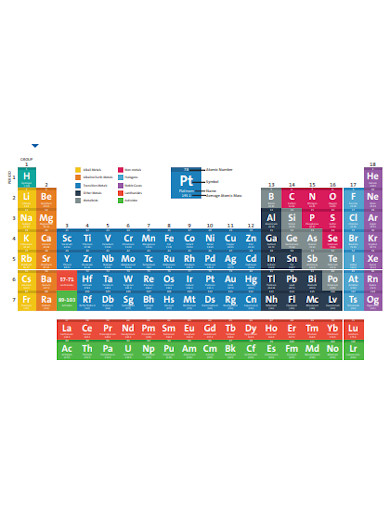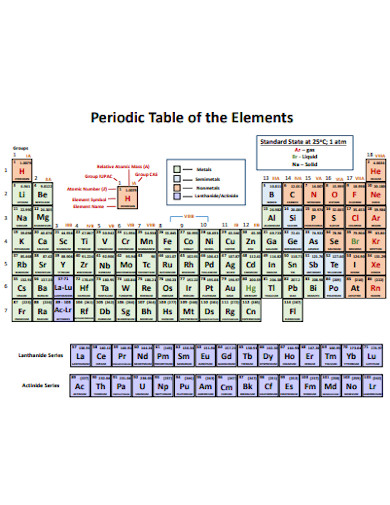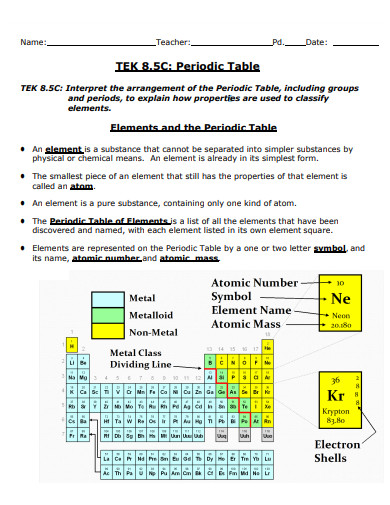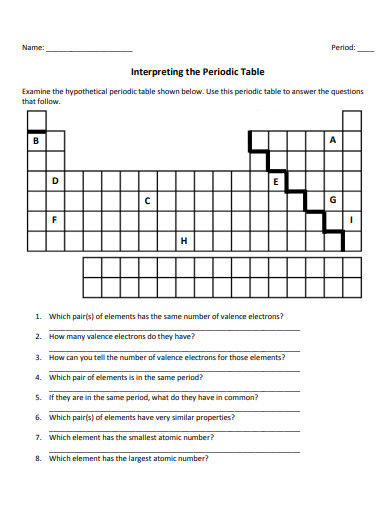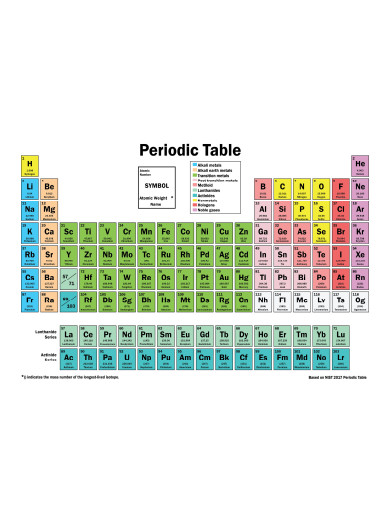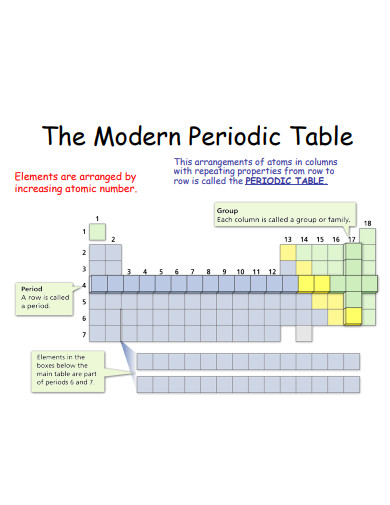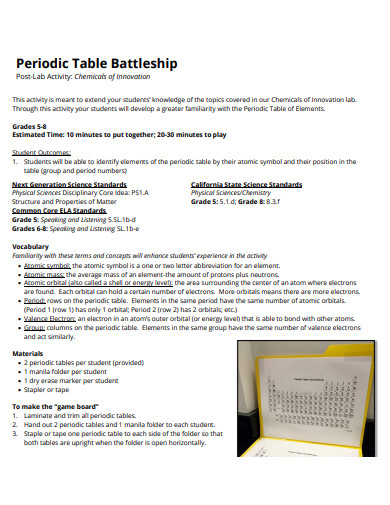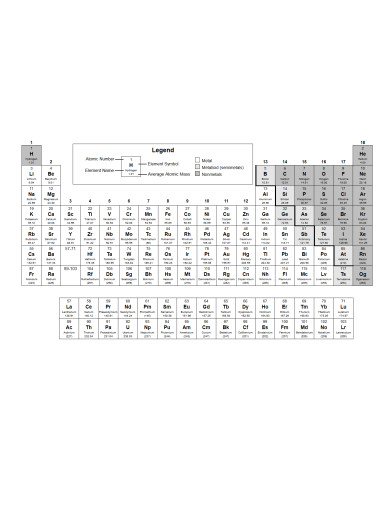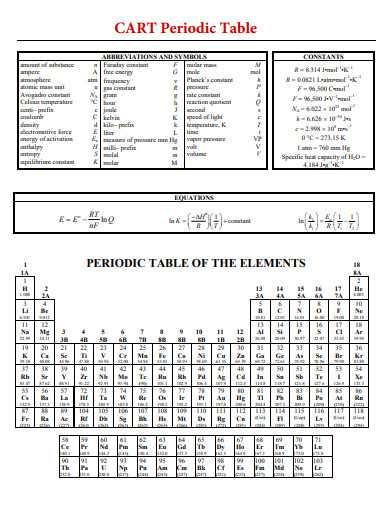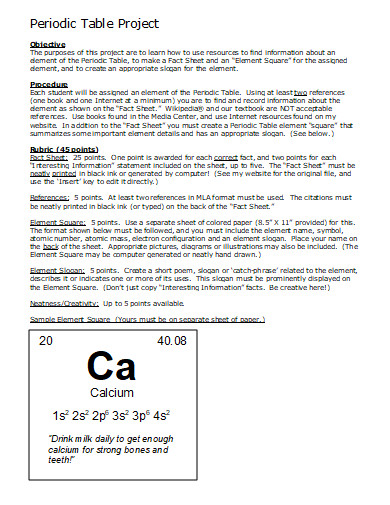Before the start of any chemistry lab classes, teachers require students to buy a periodic table chart to familiarize themselves with the elements. Introduced to the world by renowned chemist Dmitri Mendeleev in the year 1869, the periodic table is a graphical representation that shows the arrangement of different natural and manmade elements showing their characteristics, weight, composition, and other important data. The periodic table can also be found in major scientific research institutions where it was used as a guide for practicing any chemist in their research study.
10+ Periodic Table Samples
1. Periodic Table
2. Sample Periodic Table
3. Periodic Table of the Element
4. Basic Periodic Table
5. Interpreting the Periodic Table
6. Formal Periodic Table
7. Modern Periodic Table
8. Periodic Table Battleship
9. Professional Periodic Table
10. Blank Periodic Table
11. Printable Periodic Table
What Is a Periodic Table?
The periodic table is a color-coded, organized display of all chemical elements and their correlation with each other. While it is mainly used in chemistry-related professions and academic courses, periodic tables are also used in the physics lab, biology lab, engineering projects, and astronomy. In the periodic table, you will find very important details such as the atomic structure including weights and mass number, electron configuration number, the abbreviation of each element, mnemonics, melting, and boiling points. The groups of elements with the same properties and characteristics are indicated using different colors so that readers can easily identify them.
How to Create a Periodic Table
In creating a customized periodic table, you must first study the structure of a ready-made periodic table as your basis for the task. Also, you might want to think about what you want to do with the periodic table. Are you going to include it on your class’ science worksheet? Are you making a sample chemistry chart? When you have the basics down, you can conveniently generate your periodic table of elements that is accurate, readable, and catchy without going through the usual hassle of making anything from scratch.
1. Gather Data
For this task, your first step is to collect relevant qualitative data for your periodic table. Some of the elements were re-studied by scientists, thus most of the information on the old periodic table was changed. Check also whether there are newfound elements that were included in the current periodic table model so that you can adjust your design accordingly. Data gathering will not only make your research effective but also educational.
2. Write Carefully
Make sure that the abbreviations of each element are correctly entered into the right column. When putting the digits of mass configurations, weights, or mnemonics, be very vigilant so that you cannot erroneously enter data in the wrong box. One mistake will make your whole periodic table a mess, so always check your work. If you are not sure where the element goes, go back to your guide and study the details.
3. Use Light Colors
Never use dark colors when selecting a shade for your periodic table. If you end up reproducing your periodic table of elements for academic purposes, students will have a hard time reading through the contents because the color obscures the text. Choose a color that is comfortable to the eyes of the readers such as light yellow, light orange, light green, and the like.
4. Review and Refine Your Periodic Table
Before you set out to disseminate or sell your periodic table, make sure that each detail is correct. Always make it a habit to review everything you’ve written to avoid errors, which is a big mistake in science and research. If you want to develop a periodic table that is outstanding, never stop refining your craft by upgrading it every time.
FAQs
When was the periodic table revised?
Periodic tables are revised every time there is a discovery, such as a new element or upgraded versions of element data that have been released by the IUPAC.
How many elements are there in the periodic table?
As of 2016, the modern periodic table contains 118 elements which include the newfound elements Nh, Mc, Ts, and Og.
How many elements in the periodic table are man-made?
There are 26 man-made elements on the modern periodic table, and they were named after planets, scientists, and places.
The periodic table is the most important reference for scientists all around the world. Because of this tool, it becomes very convenient for our researchers to discover more elements that are most vital to daily living. Periodic tables also help industries to undertake further studies with more accuracy using the firsthand information displayed. Let us help you get started with making your periodic table by downloading our sample templates above.
Related Posts
FREE 10+ Football Play Samples in PDF | MS Word
FREE 10+ Brand Strategy Samples in PDF | MS Word
FREE 10+ Brand Story Samples in PDF | MS Word
FREE 10+ Brand Guidelines Samples in PDF | MS Word
FREE 10+ Employee Offboarding Samples in PDF | MS Word
FREE 10+ Process Documentation Samples in PDF | MS Word
FREE 3+ Introduction About Myself Samples in PDF
FREE 10+ Process Map Samples in PDF | MS Word
FREE 10+ Decision Matrix Samples in MS Word | PDF | DOC
FREE 10+ Diversity and Inclusion Statement Samples [ University, Faculty, Value ]
FREE 10+ Bid Comparison Samples in PDF | MS Word
FREE 10+ HR Records Samples in PDF | MS Word
FREE 10+ Brand Brief Samples in PDF | MS Word
FREE 10+ Merger and Acquisition Template Samples in PDF | MS Word
FREE 10+ Cost Comparison Samples in PDF | MS Word

